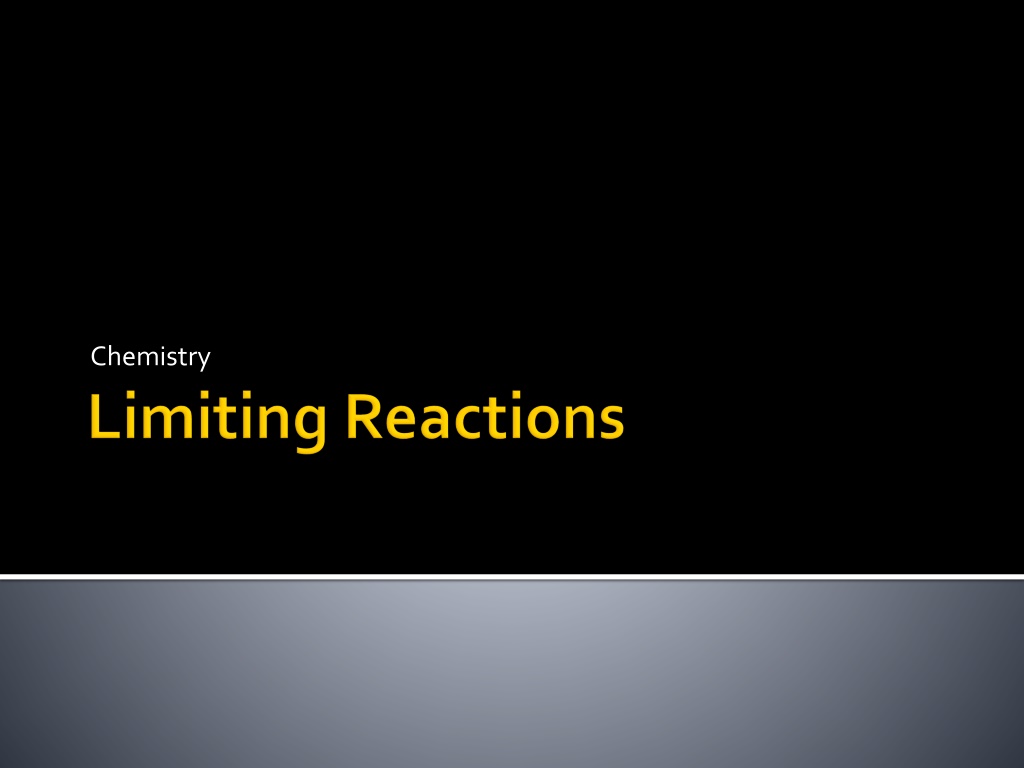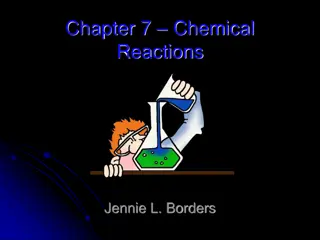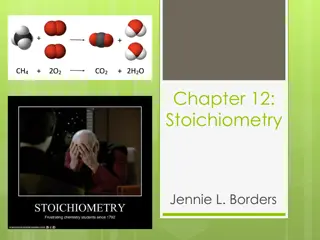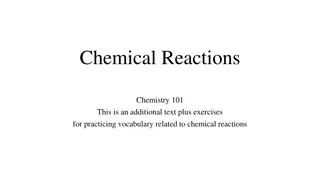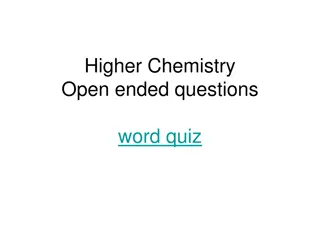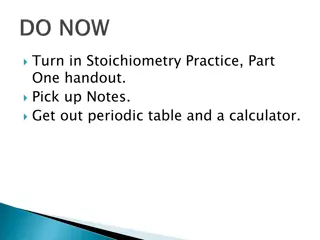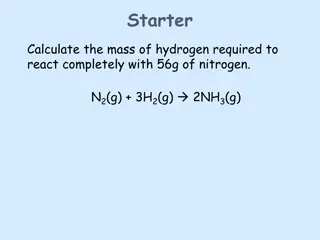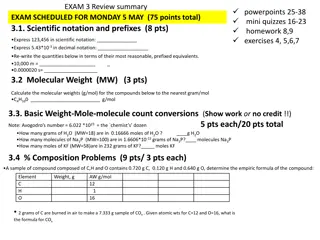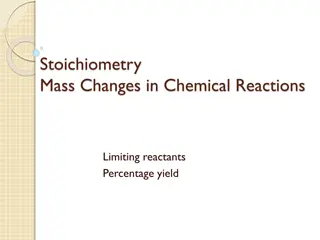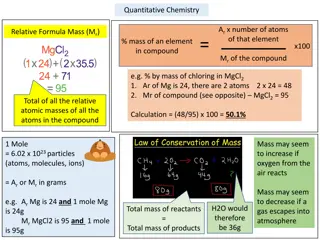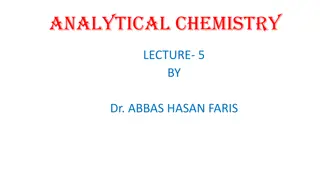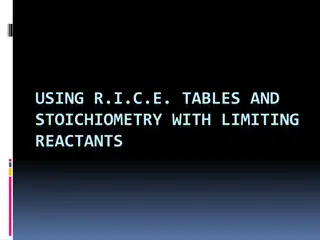Understanding Limiting Reactants in Chemistry
In chemistry, the limiting reactant is crucial as it determines the amount of product that can be formed in a reaction. By identifying and solving for the limiting reactant, you can find the maximum amount of product that can be obtained. This process involves understanding stoichiometry, calculating reactants' molar amounts, and recognizing which reactant is used up first. Excess reactants are those that are left unused after the limiting reactant is consumed. This concept is vital for predicting reaction outcomes accurately and optimizing chemical processes.
Download Presentation

Please find below an Image/Link to download the presentation.
The content on the website is provided AS IS for your information and personal use only. It may not be sold, licensed, or shared on other websites without obtaining consent from the author. Download presentation by click this link. If you encounter any issues during the download, it is possible that the publisher has removed the file from their server.
E N D
Presentation Transcript
To drive a car, you need fuel and oxygen. When the fuel runs out, you can t go any further even though there is still plenty of oxygen! (What is the limiting reactant?)
The limiting reactant is the substance that controls the amount of the product that can be formed from the reaction. The excess reactant is the substance that is not used up completely in a reaction.
If you have two GIVENs, it MUST be a limiting reactant problem. Solve the stoichiometry problem twice once for each GIVEN. The correct answer is the SMALLEST answer Why? Because the reaction will stop once one of the reactants is gone.
How many grams of Cu can be formed when 167.4 g of Fe reacts with 399.2 g of CuCl2? 2 Fe + 3 CuCl2 3 Cu + 2FeCl3 Solve the Stoichiometry problem twice, once for Fe and once for CuCl2.
How many grams of Cu can be formed when 167.4 g of Fe reacts with 399.2 g of CuCl2? 2 Fe + 3 CuCl2 3 Cu + 2FeCl3 167.4g Fe 1 mol Fe 3 mol Cu 63.5 g Cu 284.8g Cu 55.8 g Fe 2 mol Fe 1 mol Cu 399.2g CuCl21 mol 3 mol Cu 63.5 g Cu 188.5 g Cu 134.5 3 mol 1 mol Cu CuCl2 CuCl2 This is the smallest! It is the answer!
To find how much excess you have, you must take the limiting reactant (Solve for that first!), then solve for the excess reactant.
In the previous problem, you determined that CuCl2 was the limiting reactant. How did you determine this??? Because the amount of Cu formed by Fe and CuCl2 was limited by the CuCl2. It was only 188.5 g Cu from CuCl2 (compared to 285.8 g from the Fe) The Limiting Reactant is CuCl2; The Excess Reactant is Fe.
How many grams of excess Fe is left over from the previous problem? NOTE: Since CuCl2 was the limiting reactant, the amount of CuCl2 becomes the GIVEN: 399.2 g CuCl2 1 mol 2 mol Fe 55.8g Fe 110.4g Fe 134.5 g 3 mol 1 mol Fe needed CuCl2 CuCl2 We AREN T Done Yet!!!!
The stoichiometry problem shows that you needed 110.4 g of Fe. Since you started with 167.4 g of Fe, all you need to do is subtract the two to find out how much excess you have. 167.4 g Fe (Given in original problem, step 1) -110.4 g Fe (Needed) =57.0 g Fe (excess)
Finding % Yield: Actual Yield X 100= % yield Theoretical Yield
Actual Yield Must be found experimentally. You must do the experiment yourself or you will be given the information. You will see words like: produced and formed in a problem that is giving you the actual yield.
Theoretical Yield is done using stoichiometry. You would take the given and find out how much of the product should be formed. In our problem, the yield of 188.5 g Cu is the Theoretical Yield: 399.2g CuCl21 mol 3 mol Cu 63.5 g Cu 188.5 g Cu 134.5 3 mol 1 mol Cu CuCl2 CuCl2 This is the Theoretical Yield because it is the smallest
